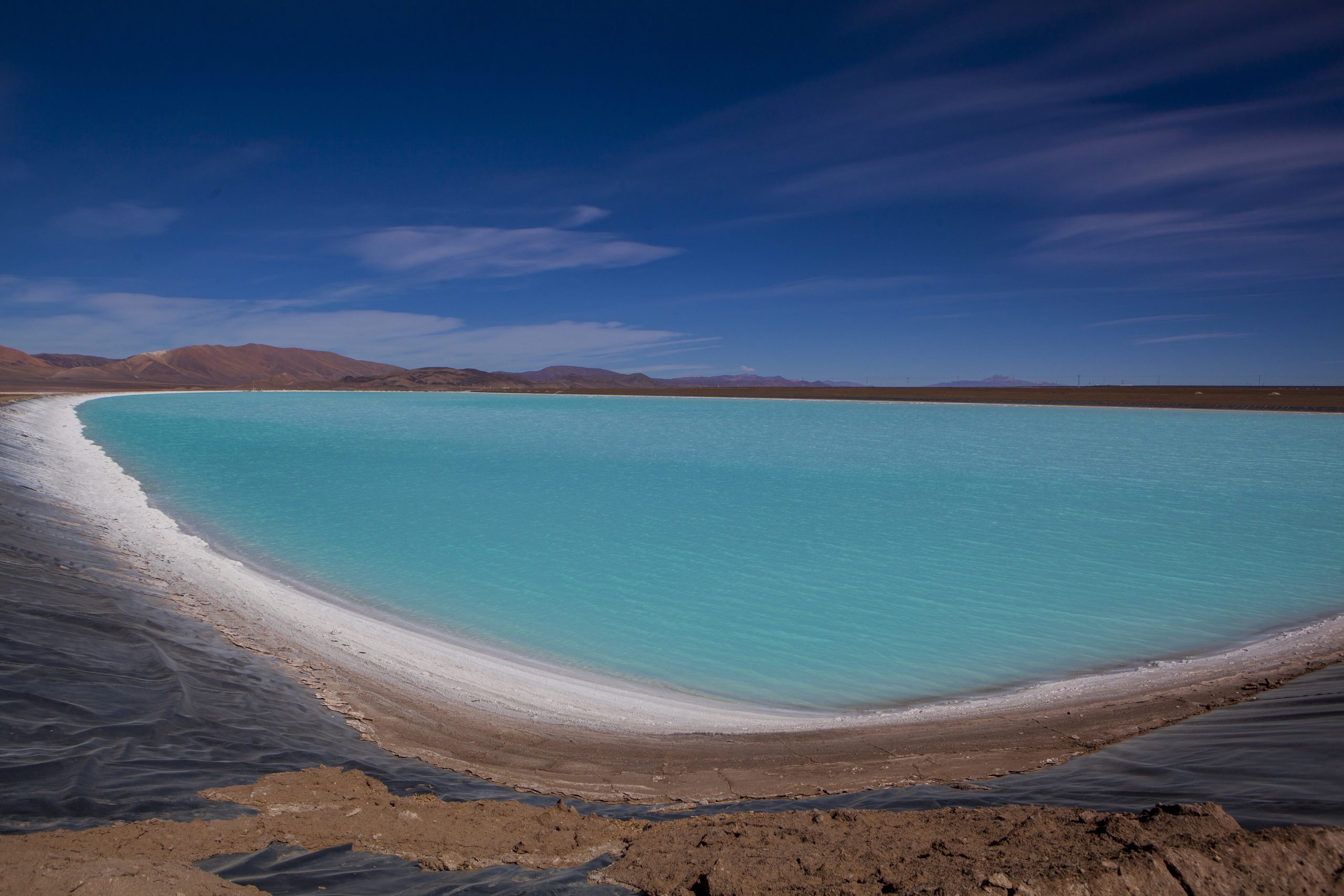by Daniel Sullivan – Head of Global Natural Resources
Q: Have commodity prices peaked in 2022?
A: Many commodities performed well last year, lithium being the standout with prices up more than 70%, having soared by 400%+ in 2021.1 This generated a huge amount of market interest, strong share price performance, capital raisings and new project growth. Many other commodities saw prices soar too, and yet by year end much of this strength had been eroded away. Gold ended flat while oil had only a small gain1, evidencing the typical short-term nature of investors chasing ‘exciting’ sectors but not committing to stay the course when news flow is quiet.
Back in the 1990s many commodities were considered dull, with low prices and low volatility meaning that pricing could remain stable for years. But what the demand impetus from China showed in the commodities super cycle of 2004-08 is that when real growth lifts demand to a higher level, commodity prices can move up very significantly to induce explorers and asset owners to bring more materials to the market. This can produce quite a varied outcome. It may come unusually quickly like the first lithium boom response around 2016, or it can take decades as we have seen in iron ore where high prices have persisted for far longer than expected. Our view is we have climbed the first part of a long hill to a higher pricing environment that is necessary to bring more commodity supply to meet world demand growth.
Q: With market expectations for a recession in the US and Europe, how will this impact the demand for natural resources?
A: The prospect of a deep recession in Europe and the US is yet to be reflected in weaker company earnings. In such an environment, a preference for resource companies with world-class assets, strong balance sheets, low costs or high margins, and good access to funding could be a wise approach.
A severe global slowdown would likely weigh on commodity prices, but we think the impact could be cushioned by tight supply. This is especially true for metals, where immense time, funding and permits are required to establish new mines. We believe this presents a huge opportunity for certain resource companies and a looming challenge for the fast-growing industries reliant on these resources.
The inflation shock from high commodity prices, especially energy, hit most countries hard. We saw Germany take aggressive action, buying energy to ensure sufficient winter supplies from storage were available. For now, this strain appears more manageable given some softness in gas and oil prices. Given its importance for the economy and households, countries are pushing towards energy independence and resilience through more renewable energy capacity additions and less reliance on volatile energy supply and prices.
Q: China’s ‘all-out’ rather than phased reopening provides much needed optimism to the markets, with commodities a key beneficiary, but may also prove inflationary. How will this impact resources companies and the wider global economy, as well as progress towards net zero?
A: The largest resources cycle in the past 35 years was the China demand-led growth super cycle mentioned earlier. Mining shares tripled in the first two years, and then doubled again. Given China is a leading consumer and manufacturer of most commodities and products we can see how significant the change is going to be. China is already leading the way in electric vehicle (EV) penetration and over the last year, monthly copper demand for EV production has increased by 25,000 tonnes per month or equivalent to a major new copper mine.2
China is a leader in the clean energy revolution. Further stimulus for the country’s economy could also prove supportive for many commodities, particularly those that are decarbonisation enablers such as copper and lithium, but also the commodities needed to support the construction of renewables including copper, aluminium, steel and silver.

Q: What does underinvestment mean for resource development and resource companies more generally? Despite the likelihood of recession, will we see some signs of a return to capital expenditure (capex) this year?
A: Metal stock levels measured by the number of days of consumption are already at low levels, for example aluminium down from a 10-year average of 77 days to 49 days.3 The economics are not incentivising new aluminium smelters in the West and the Chinese have capped their production levels. At the same time high energy prices in Europe have resulted in significant closures. No significant capex is likely in this sector for several years. In the copper sector, several large new mines are being commissioned this year but there is a noticeable absence of future projects, which is sorely needed to achieve net zero emission targets.
Capital is currently being directed to lithium mines and processing, and exploration. Unfortunately, permitting constraints mean that a major copper mine discovered today could take at least a decade to come into production. Any increases in capex at the moment is unfortunately related to inflationary pressures rather than the number of new projects required to satisfy the new demand that the energy transition requires.

Image: lithium evaporation pond
If anything, the momentum toward decarbonisation has shifted away from Europe in favour of the US. The Inflation Reduction Act (IRA), which came into effect in August 2022 offers subsidies in some cases for up to ten years that supports the acceleration of renewables as well as meaningful credits for the capture and sequestration of carbon. In total these subsidies add up to almost US$400bn and in addition the US has other programmes to lift infrastructure and encourage onshoring, including in the semiconductor industry. It is for these reasons we do not envisage a broad-based US recession.
Q: In your view, which commodities will benefit the most from the transition to net zero this year?
A:Resources provide the fundamental building blocks of economic development. While demand for some commodities like coal or oil is likely to plateau and decline, the demand for others is growing and looks set to rise. The renewable energy industry requires copper, lithium, cobalt, nickel, iron ore and silver. Digitalisation requires massive server farms and enormous quantities of energy. As the world strives towards a digitalised, electrified and fossil fuel-free future, resources have an integral and essential part to play. There is a fundamental growing demand for future energy sources and nutrition ‒ that can only be met by the resources sector. As the world evolves so does the need for different parts of the resources sector.
Companies that stand to benefit are involved in the production and utilisation of resources, equipment and/or commodity-related products that are necessary to enable a transition to a low-carbon global economy. Key decarbonisation enablers include copper, lithium, nickel, rare earths, uranium, potash, and aluminium.
Q: Are your views on the resources sector currently more optimistic or pessimistic, and why?
A:In our view, 2022 was very much a year of disruption and transition. The normalisation of monetary policy by central banks brought an end to the abnormal positioning that market participants had become accustomed to, such as ultra-low interest rates. Our optimism on resources centres around the global move to mitigate greenhouse gas emissions and efforts to slow climate change damage that is building into the ecosystem. To shift the whole world from a predominantly fossil fuel-based economy to renewable energy sources is expected to be a multi-trillion dollar investment programme every year now. This could last for the next thirty years out to at least 2050, where most nations have set their net zero emission targets.
A large portion of this programme will need the metals essential to build renewable energy, battery and electrified transport cars and networks. Copper is the backbone to electrification, and many smaller speciality metals are expected to see their demand grow between two to ten times.4 This is a significant and substantial change in the demand growth expectations for many resource commodities, and the companies that exist today are going to need to grow rapidly and work hard to find and develop new resources to meet this demand growth.
The previous resources ‘super cycle’ was exceptional, driven mainly by China’s incredible programme of investment and urbanisation of more than 250 million people. This time, over 8 billion people and nearly all global energy infrastructure are on board the transitional growth journey, so we expect the effects on demand and supply to be even greater and will have a longer-term impact. This leads us to on balance to have a more positive view on commodities and resource companies this year and beyond. While our grandparents had canaries in the coal mine, we have copper and China – both are alive and signalling improving conditions for resources. Adopting a nimble approach will enable investors to take advantage of attractive opportunities that are being created by the growth trends set to engulf the sector.
ENDNOTES
1 Bloomberg. Calendar year returns. Past performance does not predict future returns.
2 TD Securities, China Automotive Information, ICA, December 2022.
3 Alcoa 4Q22 earnings transcript.
4 Bloomberg New Energy Finance, 18 January 2023.




